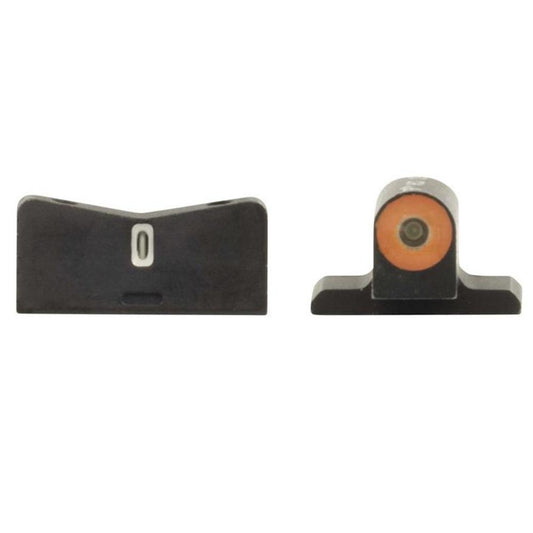

The XS Sight DXT2 Big Dot Sight for Sig P320, P225, P226, P229, and Springfield XD in vibrant orange isn't just a tool; it’s your new shooting companion. With a big dot front measuring 0.188 inches and a high-contrast colored design, this sight makes aiming intuitive, even in low-light scenarios. Its tritium-powered front sight shines in darkness, while the option between tritium and non-tritium rear sights ensures you have what you need for precise shooting. Low-profile V rear improves visibility, allowing for rapid target acquisition.
Designed with user convenience in mind, the glow dot absorbs ambient light to illuminate your target without compromise. The rear sight features a white outline for enhanced accuracy, and the durable CNC machined steel construction promises longevity. Backed by a 10-Year Warranty and a 30-Day Satisfaction Guarantee, this sight fits standard holsters perfectly. Upgrade your shooting game today with the XS Sight DXT2 Big Dot Sight!
Features:
- TRITIUM POWERED for a bright front sight that glows in low light conditions, enhancing accuracy.
- HIGH-CONTRAST COLOR front sight helps in quick target acquisition in various lighting scenarios.
- BIG DOT FRONT at 0.188 inches ensures a clear, easy sight picture, perfect for precision shooting.
- LOW-PROFILE V REAR significantly improves visibility of the front sight for faster aiming.
- GLOW DOT TECHNOLOGY absorbs light, ensuring visibility even in dim environments.
- DURABLE CNC MACHINED STEEL construction offers long-lasting performance and reliability.
- REAR SIGHT LEDGE facilitates one-handed slide manipulations for quicker reloads.
- 10-YEAR WARRANTY provides peace of mind with a satisfaction guarantee included.
Technical Specifications Table
| Feature | Details |
|---|---|
| Type | Big Dot Sight |
| Compatibility | Sig P320, P225, P226, P229, Springfield XD |
| Front Sight Diameter | 0.188 inches |
| Material | CNC Machined Steel |
| Warranty | 10 Years |
What’s in the Box?
- XS Sight DXT2 Big Dot Sight
- Instruction Manual
- Warranty Information
Customer Reviews
"The XS sight has transformed my accuracy. The big dot makes aiming effortless!" - Alex R.
"I love how bright the sight is at night. It’s made a real difference in my performance!" - Sarah M.
FAQ
How does the tritium feature work? The tritium-powered front sight contains a phosphorescent material that glows in low-light conditions, allowing you to acquire targets effortlessly even in darkness. This ensures that your sight works well during nighttime or in poorly lit environments.
Can I install the XS Sight DXT2 myself? Yes! The installation process is straightforward and can be done with basic tools. However, if you are unsure about the installation, we recommend seeking assistance from a professional gunsmith for optimal results.
Similar Models
Looking for the perfect complement to your shooting gear? Discover our extensive XS Sights collection, including models tailored for different firearms and shooting preferences. Explore our full range for exceptional sights designed to elevate your shooting performance!
You May Also Like
Here’s some of our most similar products people are buying. Click to discover trending style.






